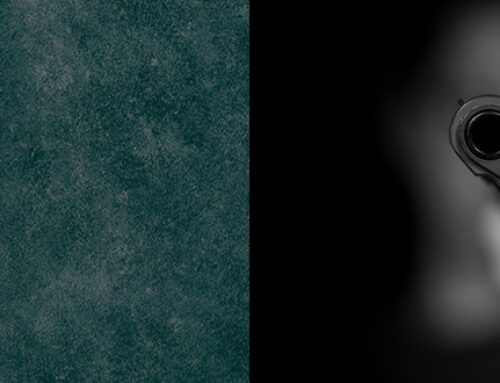What kind of images does the term witchcraft provoke? To many it brings thoughts of dark, secret rituals with sinister intent, curses being cast on the unwary designed to bring about their undoing. Others are reminded about witchcraft only one time a year. For them it brings images of children dressed in their pointed hats enjoying candy; of cutouts of witches surrounded by broomsticks, pumpkins, and dry leaves. This creates a problem in trying to understand witchcraft. The subject is either too frightening or too silly to consider. Perhaps many people, Christians included, would be surprised to discover that what goes by the name of witchcraft is often quite a bit more sophisticated and thoughtful than they expected. A Christian analysis must resoundingly condemn witchcraft, but that analysis must be based on a fair assessment of the phenomenon as a whole.
Why Bother?
Some may wonder why there is any need to take a look at witchcraft. After all, there is seemingly no end to which people will go in their eccentric beliefs or practices. The reason a topic such as this merits examination is precisely because witchcraft is becoming less eccentric and more mainstream. For example, in the summer of 2004 the Parliament of the World’s Religions convened in Barcelona, Spain. Representatives from many of the world’s religions were present to “seek peace, justice and sustainability and commit to work for a better world” as well as to “deepen spirituality and experience personal transformation.”[1] Present at the 2004 conference (as well as the 1993 and 1999 conferences) were representatives of the Covenant of the Goddess, “the world’s largest religious organization for Neo‐Pagan Witches,” as described by an elder of the organization.[2] A common theme that comes up in the context of such conferences is the increasing emphasis on “interfaith.”
In contrast, one group that is often conspicuous by its near absence at such conferences is evangelical Christianity. Why might this be so? Without jumping ahead to my critique, it should be pointed out that the worldview of many who would attend such conferences would vehemently reject the religious exclusivism that characterizes historic, orthodox Christianity. In a very serious way, therefore, many of the world’s religions, including witchcraft, either explicitly or implicitly see themselves aligned against evangelical Christianity; nevertheless, Jesus’ command to preach the gospel and make disciples of all nations invariably includes witches. In order to do so, it is necessary that we understand who they are and what they believe. Knowing what we are up against is a primary element in being prepared to carry out His Great Commission.
What Witchcraft Is
Definitions can either facilitate or impede understanding. A helpful definition is one that is not overly simplistic, and one that mentions important distinctions as well as similarities between familiar and unfamiliar terms where they exist. In our current age of ecumenical enthusiasm, there is the danger of Christians overlooking the most important aspect of a given religion, namely, the difference between it and their own Christian faith.
There are similarities between flour and ricin. They both are made from plants; they both are white powders; but it is not their similarities that are interesting or important, it is their differences. One is a food and the other is a poison. One promotes life and the other effects death. Don’t be misled by my metaphor—I am not at this point likening witchcraft to ricin. I am only trying to show that with some issues the differences can be just as important, if not more so, than the similarities. With this in mind let me now delineate the main tenets of modern witchcraft and then contrast those with the main tenets of evangelical Christianity.
Witchcraft Is Known by Many Names
When one begins to investigate the phenomenon of modern witchcraft, it does not take long to notice a range of terms associated with the practice: The Craft, Wicca, paganism, Neo‐Paganism, and so on. Brooks Alexander, a Christian researcher who is an expert on the occult and counterculture, gives a helpful summary of certain distinctions between the terms Wicca, witchcraft, and Neo‐Paganism. Neo‐Paganism is the broadest category, encompassing a wide range of groups “that try to reconstruct ancient, pre‐ and non‐Christian religious systems—such as the Norse, Celtic, Greek, Roman, and Egyptian religions—as well as…various obscure, forgotten, and neglected occult teachings from around the world.”[3] He goes on to distinguish witchcraft from Wicca (with Wicca being the narrowest category) along the lines of how closely one follows the specific teachings and practices of the English Wiccan Gerald Gardner, who more or less gave the term Wica (with one c) to his practice.[4]
There may be subtle distinctions that some prefer to maintain when opting for one term over another, but for the most part these terms are used interchangeably. The term witchcraft is certainly the most familiar within and without the practice, but it is also the term that carries with it the most unwanted baggage. It often has sinister or evil connotations, and for those reasons many within the craft prefer the term Wicca (for the practice) and Wiccan (for the practitioner). The prefix “Neo” in Neo‐Paganism usually indicates an emphasis on one’s practice in its contemporary manifestation while still hinting that it is perhaps a revival of, or connected to, something ancient.
Witchcraft Is a Religion
As Americans, this is an important point to remember. We cherish our heritage of religious freedom, but in their enthusiasm to refute the beliefs of witchcraft, some Christians have overstated the case. They rightly claim that the United States was founded on the ethical concept of natural law (where morality is grounded in the nature of the creator God),[5] but they wrongly conclude that witches do not have constitutional rights, since witches reject the traditional Christian notion of the creator God. Without getting into the tricky issue of how and whether religion should interact with government or public life, we should recognize that, within the limits of law, all Americans have the right to exercise their own religion in accordance with the dictates of their conscience. Our contention, such as it is, with witchcraft is one of truth. It is a battle of ideas.
Witchcraft Is a Worldview
A worldview is the sum total of one’s view of the nature of reality. Everyone has a worldview even if only a few reflect on their own. One’s worldview encompasses one’s views of how reality is composed, how it works, and how we as humans fit in or relate to our universe. It can entail one’s views about the purpose of life and the origin and destiny of us all.
Naturalism. Starting at the broadest level and working down, it is fair to say that the worldview of witchcraft is naturalism. Naturalism is the view that there is no transcendent reality such as God that can intervene in the natural world. Naturalism maintains that all of reality is interrelated and operates according to “laws.” Other expressions of naturalism would include materialism, which sees all of reality as being made up of matter that operates according to material laws.
Witchcraft, though an expression of naturalism, is not materialism. Witches recognize that reality extends beyond the realm of the material. This is sometimes confusing. A worldview can be naturalistic even if it accepts the reality of an immaterial realm; indeed, even acknowledging the existence of gods and goddesses does not preclude a worldview from being naturalistic. What stands in stark contrast to naturalism is a worldview that says that the natural realm (whether material, immaterial, or both) is the creation of a transcendent God. This is supernaturalism. This is what historic, orthodox Christianity is.
Occultism. Sharpening the focus, not only can we say that witchcraft is a worldview of naturalism, it is also a worldview of occultism. The term occult is from the Latin occultus meaning “hidden,” or “secret.” The category covers a wide range of beliefs and practices that are characterized by two main points that are often thought to be “hidden” from the average person. First, the occult maintains that there is force or energy into which one can tap or with which one can negotiate to do one’s own bidding. The familiar term spell is applied to the technique of harnessing and focusing this power. The late witchcraft practitioner Scott Cunningham explains, “The spell is…simply a ritual in which various tools are purposefully used, the goal is fully stated (in words, pictures or within the mind), and energy is moved to bring about the needed result.”[6] Exactly what is the nature of this force or energy, according to the occultist, and what is the best way to work with it is what makes some of the main differences between the major occult groups such as shamanism, witchcraft, Satanism, New Age, and others.
Second, the occult maintains that human beings are divine. The practice of the occult arts is thus an endeavor to actualize one’s own divinity. As witchcraft practitioner Margot Adler claims, “A spiritual path that is not stagnant ultimately leads one to the understanding of one’s own divine nature. Thou art Goddess. Thou are God. Divinity is imminent in all Nature. It is as much within you as without.”[7]
Humanism. Witchcraft sees itself as a celebration of all life. This celebration involves the denial that there is anything wrong with the human race. The practicing witch Starhawk rejoices that “we can open new eyes and see that there is nothing to be saved from, no struggle of life against the universe, no God outside the world to be feared and obeyed”[8] (emphasis in original). Pagan Elder Donald Frew of the Covenant of the Goddess explains, “How can we achieve salvation, then? We’re not even trying to. We don’t understand what there is to be saved from. The idea of salvation presupposes a Fall of some kind, a fundamental flaw in Creation as it exists today. Witches look at the world [around] us and see wonder, we see mystery.”[9]
Witchcraft Is a Practice
Notice that the term practice is often used with the term witchcraft. What this tells us is that, for many, Wicca is as much what someone does as it is what someone believes. While it is certainly true that what one does is invariably a product of what one believes, for witchcraft the emphasis is on what the practice can do to enhance one’s own well‐being as well as the well‐being of others. Witches do not simply adhere to a list of dogmas; indeed, in many ways witches like to think that they eschew dogmas. As Adler describes it, “If you go far enough back, all our ancestors practiced religions that had neither creeds nor dogmas, neither prophets nor holy books. These religions were based on the celebrations of the seasonal cycles of nature. They were based on what people did, as opposed to what people believed. It is these polytheistic religions of imminence that are being revived and re‐created by Neo‐Pagans today.”[10]
A look through witchcraft material at the local bookstore will reveal that much of it deals with various rituals and activities that can be perfected in order to manipulate and utilize this cosmic or psychic force to do one’s bidding. One will find chapters on the various items of clothing to wear (robes; jewelry; horned helmet, when one is not working naked, or “skyclad”); the tools to use (candles, herbs, tarot cards, talismans, fetishes); and rituals to perform (spells, incantations, chanting, music, dancing)—all of which enables the practitioner to become open to these forces (if they exist outside) or to conjure up these forces (if they originate from within). One will learn how to interpret dreams, meditate, have out‐of‐body experiences, speak with the dead, heal, and read auras. One can seek to develop one’s own powers within the context of other witches (in a coven) or alone (in solitary practice). There are no obligations to follow any previously prescribed method. If what others have done before works, that is fine. If one sees the need to change the ritual or tools to get better results, then that is fine as well. All of these activities are designed to do two things: to enhance the well‐being of one’s self or those around him or her and to actualize one’s own divinity.
Sources:
[1] Parliament of the World’s Religions, http://www.cpwr.org/ 2004Parliament/welcome/index.htm.
[2] Donald H. Frew, “Pagans in Interfaith Dialogue: New Faiths, New Challenges,” CoGWeb, http://www.cog.org/pwr/ don.htm. On the significance of the presence of pagan witchcraft at the conference, Frew commented, “The 2004 Parliament…cemented our position as an established religion on the world stage.” (Donald Frew, e‐mail interview by author, October 31, 2004.)
[3] Brooks Alexander, Witchcraft Goes Mainstream: Uncovering Its Alarming Impact on You and Your Family (Eugene, OR: Harvest House Publishers, 2004), 23.
[4] The question of the origin and history of modern witchcraft is complicated. According to some researchers, Gerald Gardner (1884–1964) is almost single‐handedly responsible for the modern phenomenon we now know as witchcraft. Whether Gardner invented or rediscovered the religion is disputed. For discussions on the matter, see Brooks Alexander’s work cited in endnote 3; Ronald Hutton, Triumph of the Moon: A History of Modern Pagan Witchcraft (Oxford: Oxford University Press, 1999); Jenny Gibbons, “Recent Developments in the Study of The Great European Witch Hunt,” CoGWeb, http://www.cog/org/witch_hunt.html. For a response to earlier versions of Hutton’s arguments, see D. H. Frew, “Methodological Flaws in Recent Studies of Historical and Modern Witchcraft,” Ethnologies 1 (1998): 33–65. For Hutton’s rejoinder to Frew, see Ronald Hutton, “Paganism and Polemic: The Debate over the Origins of Modern Pagan Witchcraft,” Folklore (April 2000), http://www.findarticles.com/p/articles/mi_m2386/is_1_111/ai_62685559. I agree with Alexander’s conclusion: “There has been no passing down of any tradition from medieval witches to anyone in our own time. There is no identifiable continuity between the witchcraft of the Middle Ages and the modern‐day religious movement that bears the same name.” (Alexander, Witchcraft Goes Mainstream, 127.) This is not to say, however, that there is no continuity between some of the concepts of modern witchcraft and ancient religions. As Donald Frew observes, “There is a genuine antiquity to many of the core theological concepts and linked liturgical practices, and…there is a traceable path of transmission from Classical antiquity down to the modern movement, but…this is not the same thing as a continually practicing group.” (Donald Frew, e‐mail interview by author, October 31, 2004.)
[5] For a defense of the role of natural law in the birth of the United States of America see Gary T. Amos, Defending the Declaration: How the Bible and Christianity Influenced the Writing of the Declaration of Independence (Brentwood, TN: Wolgemuth and Hyatt Publishers, 1989). For an examination of natural law theory in pluralistic America see Norman Geisler and Frank Turek, Legislating Morality: Is It Wise? Is It Legal? Is It Possible? (Minneapolis: Bethany House Publishers, 1998) and Carl Horn, ed., Whose Values? The Battle for Morality in Pluralistic America (Ann Arbor, MI: Servant Books, 1985).
[6] Scott Cunningham, The Truth about Witchcraft Today (St. Paul, MN: Llewellyn Publications, 1988), 17.
[7] Margot Adler, Drawing Down the Moon: Witches, Druids, Goddess‐Worshippers, and Other Pagans in America Today, rev. and exp. ed. (Boston: Beacon Press, 1986), ix.
[8] Starhawk, The Spiral Dance: A Rebirth of the Ancient Religion of the Great Goddess (San Francisco: Harper and Row Publishers, 1979), 14.
[9] Frew, “Pagans in Interfaith Dialogue.”
[10] Adler, ix.
[11] Janet and Stewart Farrar, A Witches Bible Compleat: Principles, Rituals and Beliefs of Modern Witchcraft, rev. ed. (New York: Magickal Childe, 1987), 2:135.
[12] Shelley Rabinovitch and James Lewis, The Encyclopedia of Modern Witchcraft and Neo‐Paganism (New York: Citadel Press, 2002), s.v. “Neo‐Satanism Compared and Contrasted with Neo‐Paganism,” 185–86, emphasis in original.
[13] See, e.g., Gavin Frost and Yvonne Frost, The Magic Power of Witchcraft (West Nyack, NY: Parker Publishing, 1976), 130.
[14] The belief systems of Christianity and witchcraft are mutually exclusive, but Christians are called to love all human beings and consider as their true enemy the evil spiritual force that lies behind the world’s anti‐Christian belief systems (Eph. 6:12; cf. Matt. 5:43–47).
[15] Farrar, 2:33.
[16] Adler, vii.
[17] The emphasis on the God and the Goddess stems from witchcraft’s worldview of the interplay in reality of opposites that seek balance. The Farrars explain, “All activity, all manifestation arises [sic] from (and is inconceivable without) the interaction of pairs and complementary opposites.” (A Witches Bible Compleat, 2:107.)
[18] Adler, viii.
[19] Frew, “Pagans in Interfaith Dialogue.”
[20] Cunningham, 65.
[21] Frew, “Pagans in Interfaith Dialogue.”




